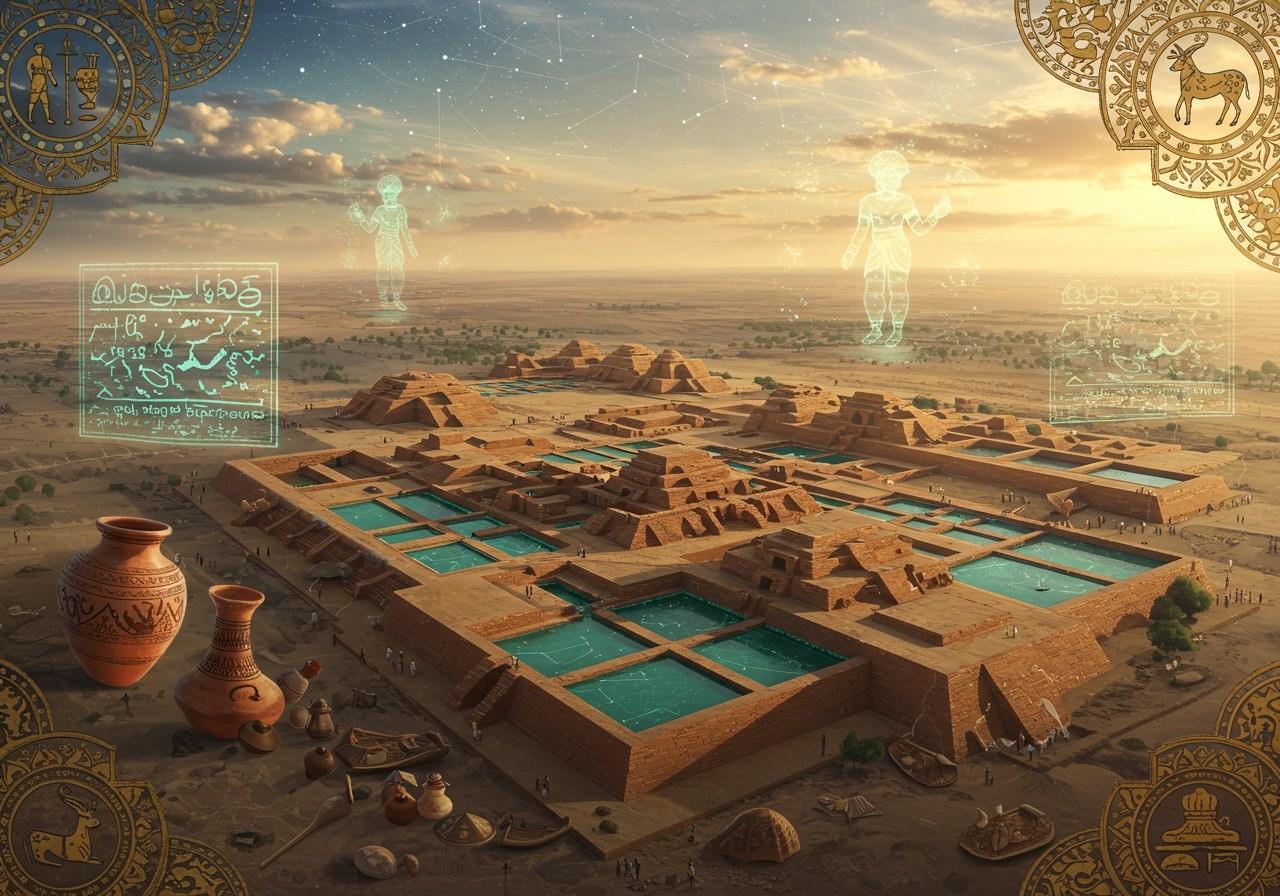Dholavira: An Architectural Marvel of the Indus Valley Civilization

Dholavira, a UNESCO World Heritage site since 2021, stands as a testament to the ingenuity of the Indus Valley Civilization (IVC). Located on Khadir Bet island in the Great Rann of Kutch, Gujarat, this ancient city offers invaluable insights into urban planning, architecture, and societal structures of a civilization that thrived from approximately 3000-1500 BCE. Excavations, which commenced in 1990 under the Archaeological Survey of India, have revealed a city spanning about 100 hectares, featuring a fortified city, a cemetery, and remarkable engineering feats.
Unveiling the Historical Context
The IVC, one of the world’s earliest urban cultures, flourished between 2500-1900 BCE across parts of modern-day India, Pakistan, and Afghanistan. Dholavira, along with Harappa and Mohenjo-daro, represents a pinnacle of the civilization’s achievements. These cities are renowned for their advanced urban planning and sophisticated architecture, demonstrating a high level of societal development.
The Discovery and Excavation of Dholavira
Archaeologist Jagat Pati Joshi brought Dholavira to light in 1967-68. Subsequent excavations unveiled a meticulously planned city layout, sophisticated water conservation systems, and unique architectural features. These discoveries highlight the technological and cultural advancements of the IVC, showcasing their remarkable ability to adapt and thrive in challenging environments.
Architectural and Urban Planning Insights
Dholavira’s city plan is divided into three distinct sections: the Citadel, Middle Town, and Lower Town. The city boasts sophisticated water management systems, including reservoirs, step wells, and drainage systems, demonstrating remarkable engineering skills. A large stadium-like structure and unique funerary architecture further distinguish Dholavira as a significant urban center of the IVC.
Cultural and Societal Aspects
The inhabitants of Dholavira possessed a highly organized society, evident in their advanced trade networks and sophisticated craftsmanship. Seals, pottery, and other artifacts discovered at the site point to vibrant cultural exchanges and economic activities. A large inscription in the Harappan script offers glimpses into their language and administrative practices, while evidence of religious practices and social hierarchy provides further insights into their complex societal structure.
Dholavira and its Contemporaries: A Comparative Perspective
Comparing Dholavira with Harappa and Mohenjo-daro reveals shared characteristics in urban planning, architecture, and societal organization, indicating a unified cultural sphere. However, Dholavira also displays unique aspects, notably its sophisticated water management system and extensive use of stone in construction, setting it apart from its contemporaries.
Dholavira’s Enduring Legacy and Modern Relevance
Dholavira offers invaluable insights into ancient urban planning, water management, and societal organization. Preserving such heritage sites is crucial for future generations. Modern technology plays a vital role in ongoing archaeological research, continually expanding our understanding of this ancient city. Moreover, Dholavira possesses significant tourism potential, offering economic benefits to the local community.
Dholavira FAQs: Unraveling the Mysteries of an Ancient City
What makes Dholavira so significant? Dholavira’s importance lies in its status as one of the largest and most well-preserved sites of the IVC, providing crucial insights into the civilization’s urban planning, architecture, and societal organization. Its unique features, like the sophisticated water management system, make it a standout example of ancient engineering.
How does Dholavira compare to other IVC cities like Harappa? While both Dholavira and Harappa share similarities as major IVC sites, Dholavira’s distinct characteristics, such as its extensive use of stone and unique water conservation techniques, differentiate it from other cities like Harappa, which is known for its advanced drainage system.
When did Dholavira receive its World Heritage designation? Dholavira was inscribed as a UNESCO World Heritage Site on July 27, 2021, recognizing its outstanding universal value and contribution to our understanding of ancient civilizations.
What unique features set Dholavira apart? Dholavira’s unique features include its elaborate water conservation system with reservoirs and channels, a distinct city layout with fortifications and gateways, and extensive use of stone in construction, setting it apart from other IVC sites.
What kind of artifacts have been unearthed at Dholavira? Excavations at Dholavira have unearthed a wealth of artifacts, including seals, pottery, beads, and tools, revealing valuable details about the daily life, trade practices, and cultural expressions of the IVC inhabitants.
Connecting with Ancient Traditions through Poojn.in
Just as Dholavira stands as a testament to the rich cultural heritage of ancient India, Poojn.in strives to preserve and promote traditional values in modern times. We offer a wide selection of authentic religious and cultural products, allowing you to connect with your heritage in meaningful ways.
Explore our collection of Bel malas, Tulsi malas, and other sacred items that enhance your spiritual practices.
For those seeking traditional attire, our range of dhotis provides a perfect blend of comfort and cultural significance. Choose from a variety of fabrics, including pure cotton and silk, to find the perfect dhoti for your religious ceremonies or everyday wear. Our dhotis are:
- Crafted from high-quality materials like cotton and silk, ensuring comfort and durability.
- Available in various sizes and styles to cater to individual preferences and traditional requirements, maintaining the authenticity of this unstitched garment.
Visit Poojn.in today to discover a wide range of products that honor India’s rich cultural heritage and support your spiritual journey.
Explore related articles on Indian culture and heritage:
- Nira River Sangam: Importance and Cultural Impact
- Shri Swaminarayan Mandir Mumbai: A Spiritual Retreat


